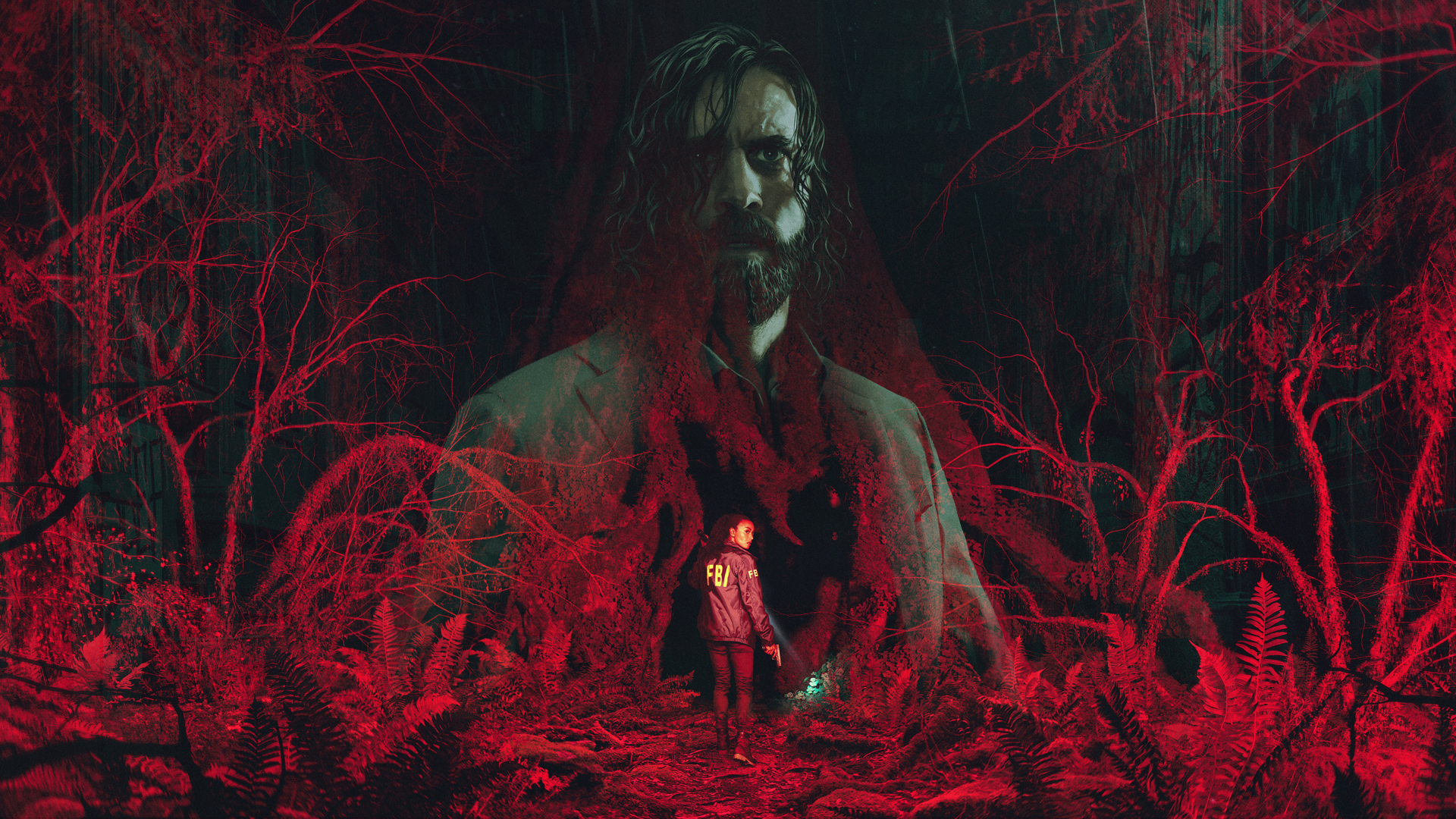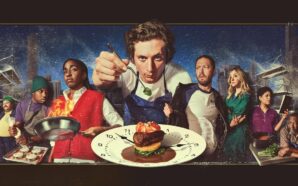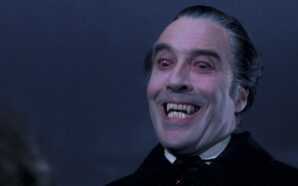From True Detective to Fargo, Seven to Taxi Driver, the film and television inspirations for Alan Wake 2 are varied and plentiful. Remedy isn’t shy about wearing them on its sleeve. Yet the great bastion of inspiration, the one that defined the original Alan Wake thirteen years ago, lives on at the heart of the sequel: Twin Peaks. Just as Mark Frost and David Lynch’s long-awaited sequel, Twin Peaks: The Return, transcended the show to a new abstract, dense, weird, and dark level, so too does Alan Wake 2 for Remedy’s connected universe of games.
Before the game was released, I took a guess at how it would be inspired by The Return, but I need not guess any longer. I’ve completed the game, with the ting of a platinum trophy as the credits rolled, and have found many connections, references, and inspirations to Twin Peaks within. I won’t list the more general ones, the ones carrying over from the first game, of the pacific northwest setting or the nightmarish alternate dimensions, but the more specific details I picked up on that were added to this sequel.
When Sheriff Breaker was first mentioned, I thought ‘great, we’ll catch up with Sarah Breaker after all these years.’ Turns out, much like the sheriffs Truman in Twin Peaks, a relation to the old sheriff has taken over the role, with Tim Breaker the new chief. Speaking of Tim, he’s suddenly ripped out of reality by Mr. Door, disappearing in a similar manner to Philip Jeffries does in Twin Peaks: Fire Walk With Me. He’s done so in the morgue, where a light starts flicking during an autopsy, just like in the very first episode of the show. Tim Breaker (time breaker), who is essentially a new version of Jack Joyce from Quantum Break, a game Remedy do not have the rights to, thinks that Mr. Door, the new version of Mr. Hatch, might have some alien connection, and has been studying books on UFOs. The possible link between the supernatural nightmare dimension and classic sci-fi ideas of extraterrestrials is also rife in Twin Peaks lore, especially in Mark Frost’s The Secret History of Twin Peaks.
Mark Frost’s two Twin Peaks books are, in-universe, supposed to be written and complied by the character of Tamara ‘Tammy’ Preston. In The Final Dossier she writes about the missing protagonist Agent Cooper and in Alan Wake 2 there is also a character called Tammy writing a book on missing protagonist Alan Wake. There are many more examples of character names shared between the two stories, most found in emails dotted around the world, including Lucy, Chet, Donna, Pete, Wendy, Laura, Ed, and Harry.
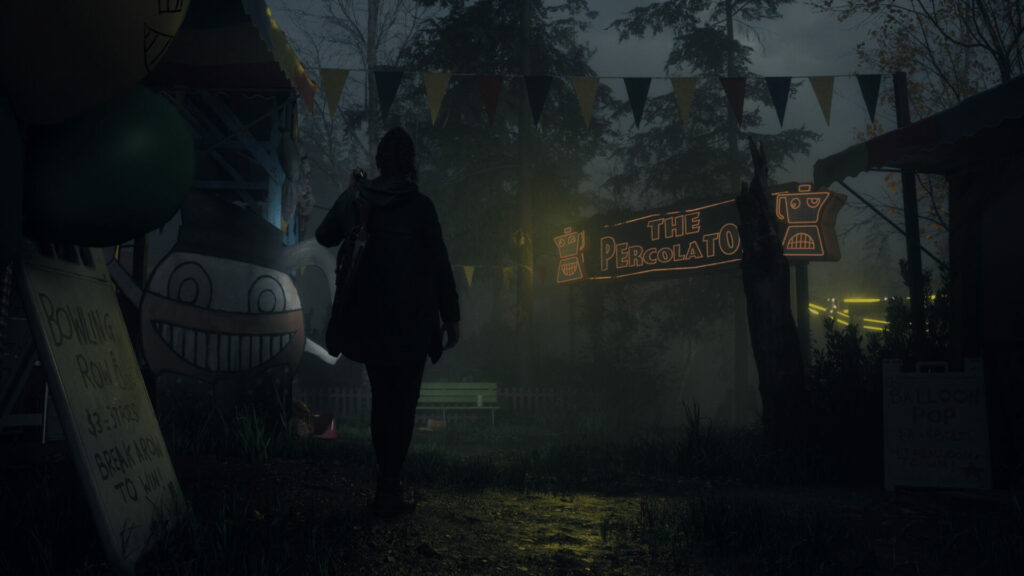
The town of Watery finally appears in Alan Wake 2 after mentions in the first game and Control. And wouldn’t you know it, Bright Falls’ neighbouring town is just like Twin Peaks’ neighbouring town Deer Meadow. The primary location of both is a trailer park. Watery is also host to ‘Coffee World’, the bizarre and creepy theme park that doubles down on Twin Peaks’ obsession with coffee. It features a ride called ‘The Percolator’, although sadly I couldn’t find a fish inside it anywhere. I can only imagine Alan Wake 3 will feature ‘Chery Pie World.’
The game features several ‘overlap’ locations, where the Dark Place occupies the same space as the real world. The visuals here are very similar to the crossing between the Red Room and Glastonbury Grove in Twin Peaks, especially the scene of Hawk exploring the area in the first episode of The Return. The curtains and trees meld and fade into one another, just like the train tunnel and trees do in the game. The game also features translucent faces superimposed on the screen at various times, looking just like the scene from the penultimate episode of The Return, when Cooper’s face is overlaid on top of the action.
Of course, the Dark Place and the Red Room are similar realms, easy to become trapped in, and in Alan Wake 2 we see that the Dark Place works in loops, just like Cooper’s time in the Red Room, ending up in the same curtained corridor. Hopefully we don’t have to wait 13 years to find out how the Dark Place is actually a spiral rather than a loop. Alan seated in the talk show set is also similar to how Cooper is positioned in the Red Room.
Ahti, the mysterious janitor from Control, reappears and it struck me that he is essentially Remedy’s version of the Giant/Fireman from Twin Peaks. He’s seemingly one of the supernatural entities but a force for good, helping Alan like the Fireman helps Cooper, in a cryptic way. His final few lines in the game, talking about the cleansing power of water, does indicate he is Ahti the water god, like the White Lodge counterpart to the Dark Place’s Black Lodge water being. Mr. Door is more human, all but confirmed as Saga’s father, but seems to now act like a Red Room denizen. His final line of “the next time we meet the circumstances will be very different” brings to mind the Arm’s line “when you see me again, it won’t be me.”
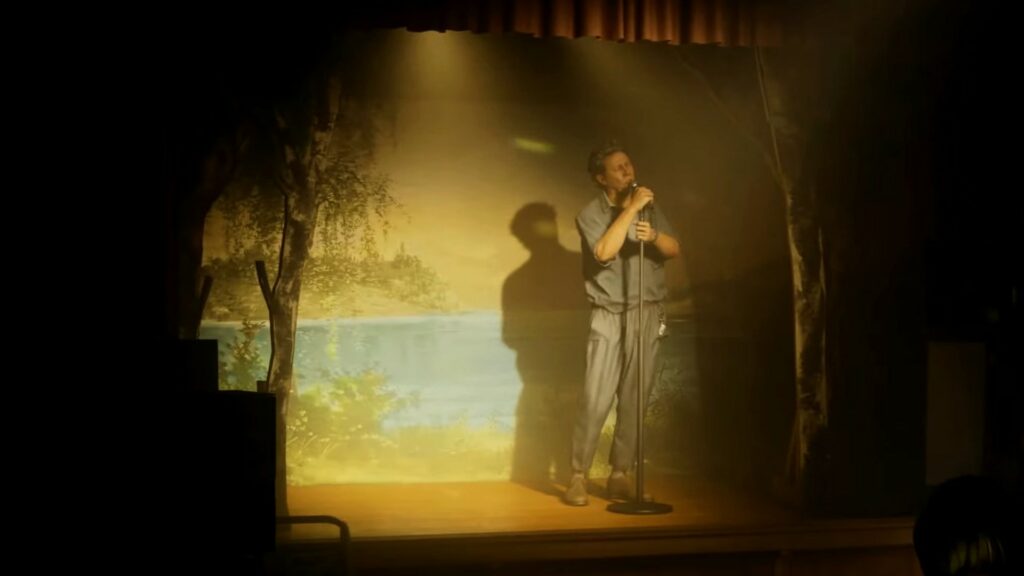
The big connection between Alan Wake’s cliffhanger and that of the original Twin Peaks was that while the hero is trapped in some other realm, his evil doppelganger is revealed. The doppelganger in both sequels ends up being revealed as such in a confrontation at the police station. Both doubles, known as misters (Mr. C and Mr. Scratch) are seeking something that will bring about the end of the world, with Mr. C searching for she-who-must-not-be-talked-about Judy and Mr. Scratch trying to get his hands on the clicker to change reality. It’s Alan who does change reality, writing Saga’s daughter’s death, just like Cooper does when he saved Laura, and only one person remembers each time: the new detective on the case: Saga in Alan Wake 2 and Tamara in Twin Peaks, which is expanded on in The Final Dossier. Both stories do ultimately hinge on the hubris of Alan and Cooper, who both seek to change reality and then kinda end up messing reality up, becoming even more lost.
Controversially, The Return held Cooper back from reappearing in the real world, truly as himself, until the final few episodes, and Alan Wake 2 does something similar. Wake is in the Dark Place for most of the game and when he does initially return it’s not the Alan we know. He’s revealed to be possessed by the Dark Presence, Scratch is stasis, and its not until the conclusion that Alan is back as the character we know. And, just like Cooper, he almost immediately decides to leave that world to try and fix the problem.
But really, the big similarity between the two is that somehow, miraculously, Alan Wake 2 managed to capture the tone and feel of Twin Peaks: The Return. There were times where I felt like I was playing through the series, walking through the town, going mad trying to escape some other dimension, trying to piece together the abstract clues that are never fully put together for you. And yet, Alan Wake 2 isn’t an empty copy and it does the game a disservice to merely compare it to its TV inspiration. It does plenty of its own stuff in its own bonkers way. And in turn, that also links it to The Return. Both are weird, unique, take risks, and never feel forced or like they are trying too hard. Two masterpieces in their own fields.
And to conclude, one final connection. A little one but perhaps the one that shocked me the most. It’s one thing to indirectly reference Twin Peaks and another to directly mention it within the text itself. Each chapter of the game ends with a song, just like the Roadhouse performances from The Return, and the song that sounds most like it could be from the show, Lost at Sea, features a lyric that mentions David Lynch himself (as well as Peaks alum David Bowie.) “Lynch catching fish is a recurring theme”




